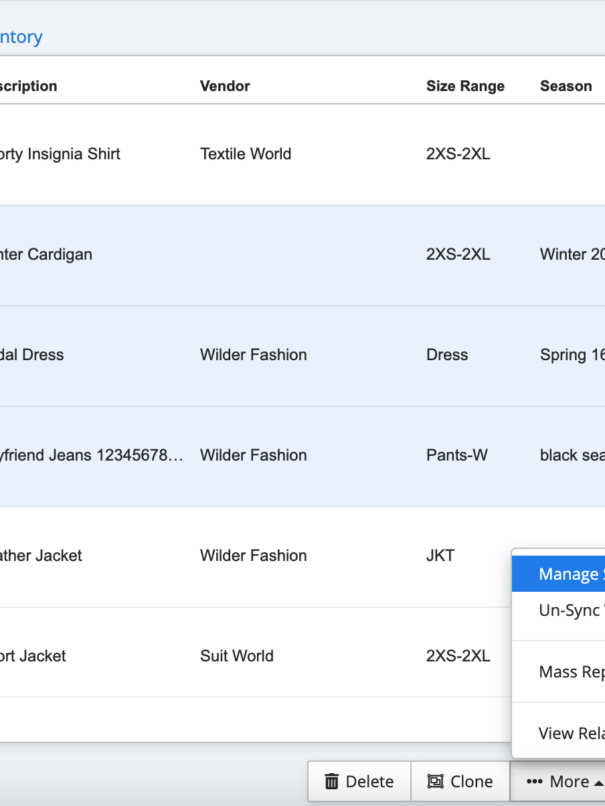The fashion world, shimmering with its glitz and glamour, often leans on fossil fuels and overshadows a pressing concern: its environmental footprint.
In 2022 alone, the apparel sector and its business model released a staggering 932 million metric tons of carbon dioxide equivalents. If the clothing production process continues on this trajectory, massive amounts of water will be used, and we’re looking at a potential emission of nearly 1.3 billion metric tons by 2030.
Amid this backdrop, the role of shipping, the manufacturing process, and plastic packaging emerge as pivotal factors, amplifying the industry’s carbon narrative. With that in mind, let’s explore the consequences of the fashion industry’s environmental impact and how fashion brands can become more sustainable by being attentive to certain environmental considerations.
Environmental Impact of Fashion Shipping
The Carbon Trail of Fashion Transportation
Every garment that graces a store shelf or an online store catalog has a life before it gets there. Using transportation, this journey generates carbon emissions. The clothing industry’s transportation mechanisms and manufacturing processes consume significant amounts of water and are major contributors to its carbon emissions.
With the current trajectory and changing consumer behavior, the future of both in-store and online shopping looks even more carbon-intensive, which, of course, will negatively impact our planet Earth.
Charting a Greener Course: Sustainable Shipping Paradigms
The clothing industry stands at a crossroads, with environmental considerations piling up. The path forward involves embracing sustainable practices. This encompasses leveraging sustainable materials, optimizing logistical routes with a vision aligned with anti-waste and circular economy regulations, and recalibrating shipping frequencies.
The goal isn’t merely to reduce the negative impact but to fundamentally redefine the ethos of fashion transportation.
Environmental Impact of Fashion Packaging
The Unseen Cost of Packaging
Every fashion item we buy, from garments to accessories, comes encased in layers of plastic packaging. While these materials serve to protect and present the product, they also contribute to a mounting waste problem, becoming a significant solid waste issue.
The clothing industry, like many others, grapples with the repercussions of discarded packaging materials, much of which adds to the environmental cost by ending up in landfills or littering our natural landscapes.
Non-Biodegradable Materials: A Persistent Issue
A significant portion of this packaging waste is non-biodegradable. Synthetic textiles and materials like plastics, foils, and certain treated papers can take centuries to decompose, posing long-term environmental threats.
As these materials break down, they can release toxins into the soil and water, further exacerbating their negative impact.
Toward a Greener Future: Sustainable Packaging Innovations
But there’s a silver lining. Fashion companies are witnessing a surge in sustainable products and packaging solutions. Brands are exploring eco-friendly alternatives, from recycled materials to biodegradable options. Innovations such as compostable bags, reusable packaging, and minimalistic design approaches aren’t just reducing the clothing industry’s environmental footprint but are also resonating with eco-conscious shopping habits.
The shift toward sustainable packaging isn’t just an environmental imperative; it’s also becoming a brand differentiator and can offer a competitive advantage for fashion businesses.

The Role of Fast Fashion in Environmental Stress
The Allure of Fast Fashion
Fast fashion, driven by fossil fuels, has become a dominant force in a world where trends and consumer behavior are pushing forces. Offering consumers the latest styles at affordable prices, it’s no wonder that fashion companies operating under this business model have seen meteoric rises.
However, beneath the allure lie a series of environmental considerations. The rapid production of clothing leads to a significant amount of waste. On top of that, transporting the products contributes to carbon emissions.
Rapid Production Cycles: A Double-Edged Sword
The essence of fast fashion lies in its ability to quickly translate runway designs into mass-produced garments. While this rapid production process feeds the consumer’s appetite for newness, it also leads to increased resource consumption, from water and other natural resources to synthetic textiles.
Moreover, the speed at which these items are often produced results in compromised quality, leading to a shorter lifespan and, consequently, a quicker journey to the landfill.
Overconsumption and waste
The affordable nature of fast fashion items encourages overconsumption. With trends changing weekly, consumers are enticed to continuously update their wardrobes, leading to a life where shopping becomes frequent.
This cycle of buying and discarding exacerbates the waste problem, with millions of tons of clothing ending up in landfills each year.
Sustainable Alternatives: A Glimmer of Hope
Despite the challenges, there’s a growing awareness about the environmental repercussions of fast fashion. Fashion companies and consumers alike are exploring sustainable alternatives, from sustainable materials for garments to new ethical manufacturing processes.
Without a doubt, there’s a palpable shift toward more conscious consumption, signaling a potential pivot toward a greener fashion future.
Alternatives and Practices for Sustainable Fashion Shipping
The Rise of Eco-Friendly Shipping Methods
In response to growing environmental concerns and an understanding of the life cycle of products, the fashion industry is making a shift toward more sustainable shipping practices.
Electric delivery vehicles, biofuel-powered ships, and optimized shipping routes are some of the innovations being adopted. These methods not only reduce carbon emissions but also lead to cost savings in the long run, disrupting the old business model.
Fashion Packaging: A Crucial Component
Beyond the mode of transportation, the materials used for packaging play a significant role in the environmental impact of shipping. Traditional packaging materials, often reliant on fossil fuels, contribute to the growing problem of plastic waste.
However, the tide is turning. Brands are increasingly adopting biodegradable and recyclable packaging solutions, reducing environmental costs.
Consumer Demand Is Driving Change
One of the most potent catalysts for this shift toward sustainable fashion practices is consumer behavior. As awareness about environmental issues grows, consumers are actively seeking out brands that prioritize eco-friendly practices, including sustainable shipping and packaging.
This demand is pushing fashion companies to innovate and adopt practices that are both environmentally friendly and economically viable.
Innovations in Sustainable Packaging Solutions
The Packaging Paradox
While packaging serves as a protective and branding mechanism for fashion products, it’s also a significant contributor to environmental waste.
The paradox lies in the balance between ensuring product safety and minimizing environmental harm, all while considering the amounts of fresh water and resources used.
Rethinking Materials: Beyond Plastic
The traditional reliance on plastics and other non-biodegradable materials, often part of clothing production, has been a primary concern. However, the fashion industry is witnessing a wave of innovation in this space. Brands are exploring materials like mushroom leather, seaweed-based plastics, and even packaging made from recycled ocean waste.
These alternatives not only decompose faster but also utilize resources that are renewable or would otherwise contribute to environmental degradation.
Minimalism in Packaging Design
Less is more, especially when it comes to sustainable packaging. Brands are adopting a minimalist approach, eliminating unnecessary layers and focusing on essential, eco-friendly materials. This not only reduces waste but also cuts down on transportation costs as products require less space, aligning with the principles of the circular economy.
Consumer Engagement and Education
Innovative packaging solutions are also becoming a medium for brands to engage with consumers. QR codes on packaging can lead consumers to information about the brand’s sustainability initiatives or even tips on how the packaging can be reused or recycled.
This interactive approach not only educates consumers but also fosters brand loyalty among eco-conscious customers.
The Role of ERP Systems in Promoting Sustainability
The Digital Backbone of Addressing Environmental Considerations in the Apparel Industry
Enterprise resource planning (ERP) systems have emerged as the digital backbone of the fashion industry, offering a suite of tools that not only optimize manufacturing processes but also drive sustainable practices.
Streamlined Supply Chain Management
In the intricate web of the garment industry’s supply chain, efficiency is paramount. ERP systems integrate diverse production processes, allowing for real-time tracking of raw materials and products. This ensures timely deliveries, reduces wastage, and maintains optimal inventory levels, contributing to reduced environmental costs.
Enhanced Design and Production Collaboration
The journey from a design sketch to a finished product involves numerous stakeholders. ERP systems bridge the gap between designers, suppliers, and garment production teams, facilitating seamless collaboration.
This integrated approach reduces redundancies, ensures consistent quality, and accelerates sustainable manufacturing processes.
Data-Driven Sustainability Insights
Armed with analytics capabilities, ERP systems provide valuable insights into various operations.
Whether it’s tracking the carbon footprint of transportation methods or analyzing the sustainability of garments, these insights enable brands to make informed decisions, set sustainability goals, and measure their progress.
Conclusion
The clothing industry stands at a critical juncture as both consumers and producers become aware of the fashion industry’s environmental impact. The challenges posed by its environmental impact are undeniable, but so is the industry’s potential for change. From embracing sustainable shipping and packaging practices to leveraging technology like ERP systems, fashion brands must follow environmental considerations and become more sustainable.
As consumers, fashion brands, and stakeholders come together, there’s hope that the industry can chart a course that’s both stylish and eco-friendly, shifting the business model to one that prioritizes the planet by focusing on using recycled material and natural fibers, producing sustainable products, and charting a course toward a sustainable fashion future with less environmental cost.







